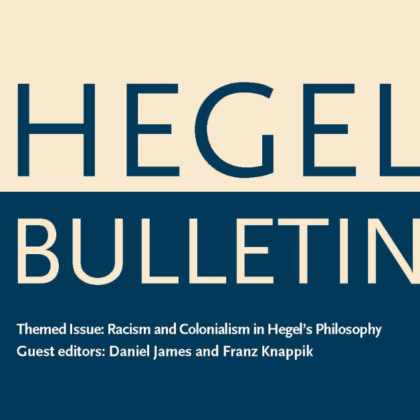Looking at Pictures
The RCPsych Article of the Month for February is: ‘Mad agency’, reflections on Goya’s ‘The Madhouse’ by Jennifer Radden published in BJPsych Bulletin.
Discussions about the part played by culture in our understanding of madness can slide quickly towards etiological questions – then, often, to ontological and epistemic ones, and deep debates over cultural relativism. They’re all important issues, of course, but the slide is too quick, serving to obscure some of the ways we might learn about disorder from culture, and about culture from disorder. Instead, I urge making room for a slower, more particular, and less encompassing approach, by looking at pictures. The use of cultural artefacts – of images – to make sense of disordered agency motivated my discussion of Goya’s great ‘Asylum.’ And, for those who would better understand both agency and disorder, that appeal to images warrants further attention.
Compared to such pictorial artefacts, Homeric and Biblical stories and portrayals by the Greek tragedians have been more enduring and are better-known today: tales of Nebuchadnezzar’s seven years’ madness; Bellerophon consuming his own heart on the Alêian plain, Ajax in his murderous rage; the incomprehensible violence of Medea… And I suppose the fragility of most non-literary art objects must partly account for their comparative neglect. Yet depictions of madness in the visual arts, if rarely as old as those narrative accounts (which they frequently illustrate), are still very old, and also numerous, even if many have been lost, and now widely available digitally.
Representations of melancholia from Early Modern times are the most familiar parts of this tradition, with their conventions of posture and mien (the drooping head on hand and downcast look) and complex iconography. But many, illustrating the pages of early manuscripts, calendars and psalters and the like, are older. All are valuable parts of our Western heritage in serving to at once mirror, and “show us how to see” madness, in the words of cultural historian Sandor Gilman. Underlying our concepts of disorder, he describes a
continued presence … of older images of the insane, images that overtly or covertly color our concept and serve to categorize …upon first glance. (Gilman, 1982, Preface)
Beyond professional art historians, a handful of others have also valued these images, including Michel Foucault – Gilman’s muse. And any analysis such as theirs runs the risk – one familiar from all of Foucault’s historical work – of an overly romanticizing interpretation. It’s a risk in interpreting any aspects of madness, and a very real one, perhaps nowhere more prevalent than in the cultural tropes linking madness and the melancholic temperament to admired traits like genius. These tropes misrepresent madness and genius both, Louis Sass notes in recent work. I would agree and add: as they do melancholia. I would also concede that my account of the hidden ‘freedom’ and ‘agency’ that can be found in Goya’s asylum, may be similarly culpable. It’s a tricky matter. For instance, where should the charge be directed, we might wonder? Perhaps towards the artist: the scene Goya observed may have been too unrelievedly joyless to paint without adding a hint of lightness. Perhaps it lies with us. In the thrall of the exhilarating ludic joy we recognize in today’s images of Mad Pride marches, maybe we cannot envision experience so abjectly awful. Interpreting and projecting backwards onto artists and canvasses of the past must surely always incur risks, and the best answers to our questions may be elusive. But, it seems worth thinking about, and trying.
Another risk, but one we can more easily avoid, is the hasty slide to fundamentals described above. To the extent it attributes to images a salience and reality almost surpassing that of the phenomenon depicted, social constructionism can be resisted, for example, or side-stepped. It need not, and should not, allow us to neglect the other ways pictures can teach us about mad agency. Regardless of where they fit in the broader episteme, images from the past constitute under-tapped sources as we try to better understand madness itself and perhaps also, as I’ve tried to show in discussion of mad agency, the demands and claims voiced by mad activists.
Finally, then, because we have much to learn about agency even in normal minds, questions remain about agency in minds beset by less usual experiences and about those minds and experiences themselves. These continuing unknowns, it seems to me, encourage us to look more closely at pictures.
Gilman, S. 1982. Seeing the Insane. Lincoln, Nebraska: University of Nebraska Press.
Sass, L. 2020-21. Schizophrenia, Modernism, and the “Creative Imagination”; On Creativity and Psychopathology. Creativity Research Journal 13 (1):55-74.
Why I chose this article: “In February’s issue of the BJPsych Bulletin we launch a new section called Cultural Reflections which intends to illuminate the many interfaces between psychiatry and the humanities. We are grateful to Professor Jennifer Radden, a renowned philosopher, for her contribution which exemplifies the academic rigour required. She draws on Goya’s painting “The Madhouse” to sketch a novel approach to the knotted problem of agency and mental disorder. The paper is erudite yet readable; incisive without being intimidating. David Foreman, the new section’s editor, reveals more in his editorial on the aims and ambitions of this new venture. Radden’s reflections on Goya are just the beginning.”
Norman Poole, Editor-in-Chief, BJPsych Bulletin






